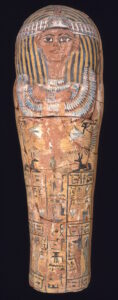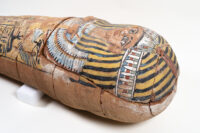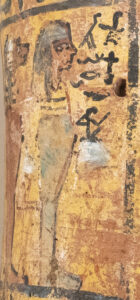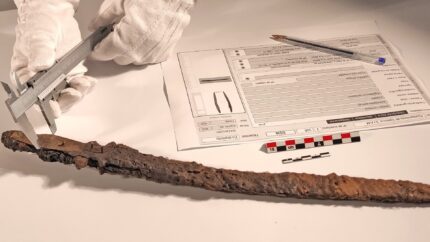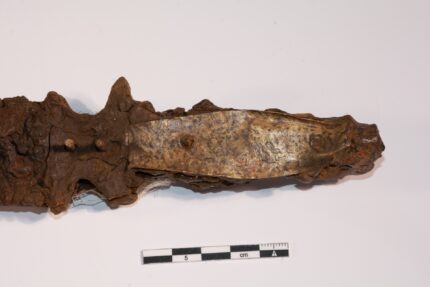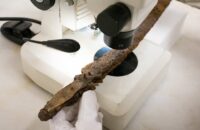 The unusually large and pristine Roman copper alloy dodecahedron found at Norton Disney last June is returning to Lincolnshire for the first time since its discovery. It will go on display at Lincoln Museum starting this Saturday as part of the Festival of History, a city-wide celebration of Lincoln’s heritage, as a centerpiece of the city’s Roman history.
The unusually large and pristine Roman copper alloy dodecahedron found at Norton Disney last June is returning to Lincolnshire for the first time since its discovery. It will go on display at Lincoln Museum starting this Saturday as part of the Festival of History, a city-wide celebration of Lincoln’s heritage, as a centerpiece of the city’s Roman history.
Alongside the dodecahedron display, as part of the festival visitors can meet the mighty Romans themselves in the museum’s atrium, where the legion has returned to ‘Lindum Colonia’. And explore some of the many other Roman treasures that have been unearthed across the city and county in the archaeology gallery.
For those craving a deeper dive into Lincoln’s history, don’t miss out on a guided tour of Posterngate, where you can explore the hidden Roman gateway beneath the city streets[…]
Lincoln’s Festival of History events will take place over the long weekend (May 4-6th), which is a holiday in Britain, but the dodecahedron will remain on display until early September.
It is sure to be a big draw to the museum. The discovery of the dodecahedron made headlines around the world, and the North Disney History and Archaeology Group, the community archaeology organization that unearthed it, has gotten a barrage of messages from people sharing their theories about how the objects may have been used and why. The organization will return to the find site in June to pick up where the excavation left off when they ran out of time and money. While odds are slim that they’ll find a key clue to answer all the questions about the Gallo-Roman dodecahedra, the Norton Disney example is one of the only ones to have been found in its original depositional context and archaeologically excavated, so there’s at least a chance of finding out more about these intriguing artifacts.




